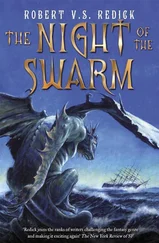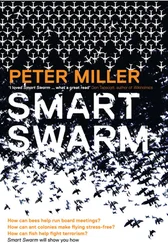The air outside was damp and the breeze much colder than I had expected. Reyes spoke to the Colombians in effortless Spanish. Someone gave me a small plastic cup full of sweet black coffee, which I drank gratefully, before we were escorted into a long, low hangar-like building, to a whitewashed room dominated by a large steel table. It reminded me uncomfortably of morgue scenes in movies.
Laid out on the table were the shattered metal and plastic remains of some machine, charred and warped by heat and force. Few shards were bigger than a finger.
The man standing beside the table was plump and middle-aged, wearing a military uniform, with sharp eyes above a graying moustache. “Martinez, Colombian Air Force,” he introduced himself, in near-fluent English. He looked at me, the only man there not in uniform. “You are the engineering expert?”
I indicated Sophie. “More her than me.”
He looked at her skeptically. She was already too engrossed by the wreckage to notice. “This is what’s left of the UAV that hit Kostopoulos?” she asked.
I twitched; it was the first time I had heard her say that name.
Martinez nodded slowly. “A flying bomb. There were several witnesses, nearby cars, unhurt except for broken glass. They said it struck the target vehicle directly and exploded on contact. Narco-terrorists, obviously, but which faction, the FARC or the paramilitaries or the international cartels, that we do not know. Our hope is for you to find a clue that will lead us to who sent it.”
“Then you’re wasting your time,” Sophie said briskly. “I might be able to work out who built it, but you’ll never be able to prove who actually dispatched it unless they’re supremely stupid, and if they were stupid they wouldn’t have used a drone. I don’t like your analogy. Not a flying bomb. Bombs are dumb. More like a small cruise missile. You know who committed your homicide? Someone who typed a command into a computer. They could have been time zones away.”
“They must have targeted them somehow. We think it was most likely laser-guided.”
She shook her head. “I imagine it homed in on a radio signal.”
“No. If they had planted a transmitter in the vehicle we would have found its remains.”
“Why plant anything? They had cell phones, didn’t they?”
Martinez looked blank for a moment. Then his face went slack with sudden understanding.
“Mobile phones broadcast their unique IDs frequently,” Sophie said, enjoying his reaction. Talking down to important authorities was one of her favourite pastimes. “That’s how they find new cell towers. With a drone capable of targeting that signal after them, they might as well have been shouting ‘come get me.’”
“Their phones. Their phones.” Martinez shook his head wonderingly as he considered the ramifications. “If you’re right, someone with a weapon like that, a drone, they could take out anyone with a cell phone. Generals, presidents, anyone.”
“Sure. Pick your target, harvest their phone’s ID, send up a drone, get it into signal range, and let it do its thing. Circle, triangulate, spiral in. Boom. The perfect assassination. Death from above, undetectable, unstoppable, untraceable.” She sounded vaguely pleased by the notion of such murderous elegance. “I could be wrong. But that’s how I would have done it.”
Martinez looked appalled. I sympathized. If Sophie was right, no one was safe.
“How hard would it be to build that kind of drone?” Reyes asked.
“You wouldn’t,” Sophie said. “You’d buy it. Research UAVs go for about fifty thousand dollars nowadays. Range of several hundred miles, used for all kinds of purposes. Swap out the camera for some radio gear and control circuitry, you’d still have a ten-pound payload if you sacrificed some distance. I’m no explosives expert, but that sounds like more than enough. The hardware is trivial.” She paused. “But the software, that’s another story. Real-time, real-world aerial maneuvering, triangulating on a signal, those are hard problems. Where were they hit? In an urban environment?”
“On the highway,” Martinez said.
“Not surprising. Too many complexities in a city. But even in the open it wouldn’t be easy, especially if he was in motion. You can buy a UAV off the shelf, more or less, but they don’t exactly sell real-time targeting software at Best Buy.”
“Then where would you get it?” Reyes asked.
“Well… it’s one of the things we do at our lab,” Sophie admitted. “Not homing in on cell phones specifically, but our nets support multiple targeting heuristics. About half a dozen other university labs around the world might have a similar capability. I can give you all the names, it’s a small field, everyone knows everyone. Maybe the same number of private facilities, aerospace companies. And I’m sure military, too, but you’d know more about that than us.”
“So maybe twenty different organizations could have created this thing?” Harrison said incredulously.
Sophie nodded cheerfully. “At least. Two years ago it was more like zero. The inexorable march of technology. I may not find any clues, but I can guarantee you one thing, Michael Kostopoulos will not be the last victim of a drone assassination.”
An unpleasant hush fell.
“This isn’t off-the-shelf hardware,” I said. That was my remit; my job at the lab was to build and test the UAVs that hosted Sophie’s software. I donned latex gloves and picked up the largest surviving piece, a wingtip. It was remarkably light, and non-metallic. “Carbon fibre?”
Martinez looked at me warily. “How can you tell? Our forensics team needed microscopes.”
“Just a guess. Same thing they use to make airliners nowadays. Very strong, very light, very expensive.”
“Speaking of microscopes,” Sophie said, balancing what looked like a tiny golden flake on her latex-clad fingertip, “I need one for this.”
Martinez made a call. Soon a uniformed Colombian girl who looked about eighteen brought a microscope. Sophie studied the fragment of microchip with great interest for some time.
Finally she lifted her head and looked straight at me. “Hard to tell for sure, but it looks like it used to be an FPGA connected to some custom analog circuitry.”
I grunted with recognition.
“Which means what exactly?” Reyes asked impatiently.
Sophie returned to the microscope. I tried to find an answer that might make sense to a non-techie. “An FPGA is basically a reprogrammable computer chip. Slower than the kind in your computer, but you can reconfigure it completely on the fly.”
“Or it can reconfigure itself,” Sophie added without looking up.
Reyes visibly decided she didn’t care about the technical details. “So who uses these kinds of chips? Are they common?”
I shook my head. “No. FPGA plus custom analog for control chips, there are maybe three labs in the world doing that kind of research. Redekopp at MIT, Almasry in Cambridge… ” I hesitated, looked over at Sophie.
“And us,” she said mildly, still absorbed in the microscope. “And we’re the only ones using them to control UAVs.”
“Just a minute.” Okocha sounded startled. “Are you saying this came from your lab?”
“No. This isn’t one of ours. Different substrate. But it looks a lot like my work. I’m almost sure it used to be a neural network.”
Sophie stood and stretched. Her powerful brain was trapped in a fragile body: she suffered back spasms sometimes, and doubling over for an extended period like she had at the microscope wasn’t good for her. She had bad lungs, too, and the air here was damp and dusty. I gave her a concerned look and was relieved by the quick head-shake that indicated she was fine.
Читать дальше












